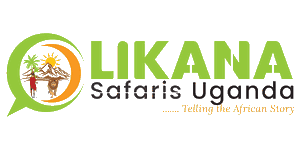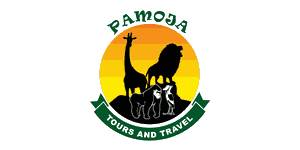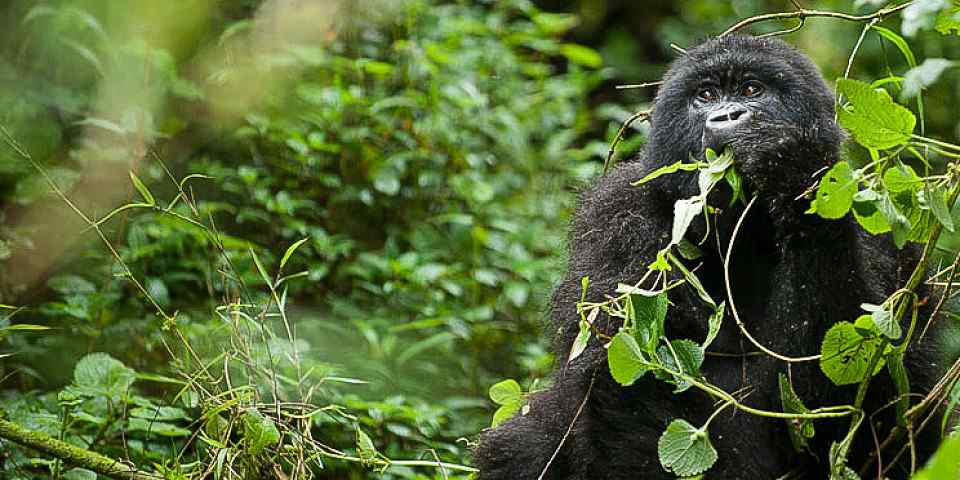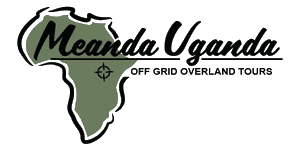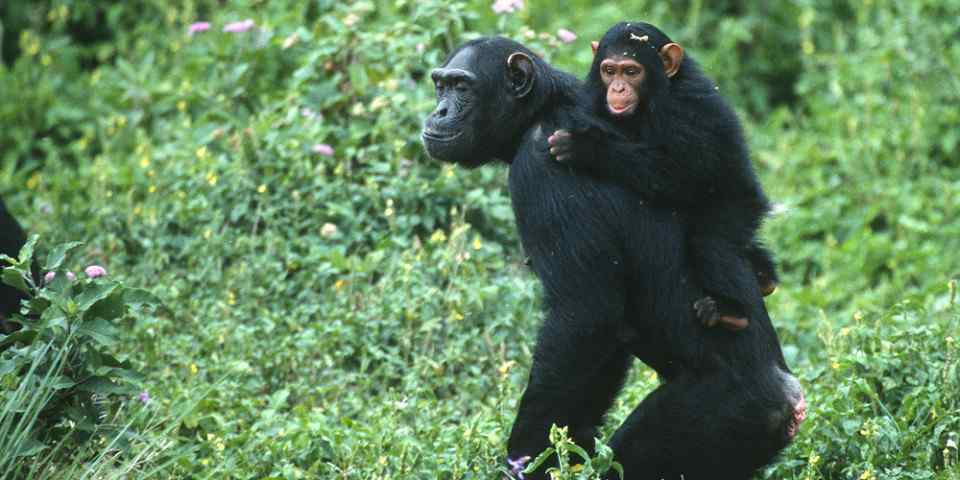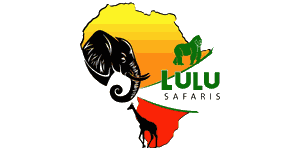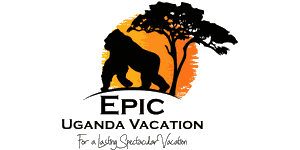Tour Length
Rates in USD $ – Change Currency
Per person, excl. international flightsOperator Rating
Other Tour Features
Filter by Operator
Filter by Accommodation
Gorilla Trekking Tours
There are many amazing wildlife encounters – but few can match coming eye to eye with a mountain gorilla. A big part of what makes the gorilla trek so special is that these big apes are so closely related to humans (the difference in DNA is only about 1.6%). They do seem to touch a nerve when they look at us with interest. The gorillas’ natural habitat is restricted to a relatively small area in a historically turbulent region. But most of this region has stabilized in recent decades, which makes gorilla tours increasingly accessible. Habitat loss is now the main obstacle to the survival of gorillas, but money spent on gorilla tourism goes a long way in securing their survival.
-
Top Rated Operator

12-Day Best of Uganda Wildlife Tour
$7,899 to $8,299 pp (USD)
Uganda: Private tourLuxuryLodge & Guest House
You Visit: Entebbe (Start), Murchison Falls NP, Kibale NP (Chimps), Queen Elizabeth NP, Bwindi Impenetrable NP (Gorillas), Batwa Experience (Highlight), Lake Mburo NP, Entebbe (End)

Wayfairer Travel
4.8/5 – 184 Reviews
-
Best Seller

3-Day Gorilla Trekking Tour in Uganda
$1,254 pp (USD)
Uganda: Private tourBudgetTented Camp & Hotel
You Visit: Entebbe (Start), Bwindi Impenetrable NP (Gorillas), Lake Bunyonyi, Equator point Uganda (Highlight), Entebbe (End)

Dav Safaris
4.9/5 – 113 Reviews
-
Best Seller

4-Day Rwanda Gorilla Trekking Tour
$2,718 pp (USD)
Rwanda: Private tour
Mid-range Lodge & HotelYou Visit: Kigali (Start), Kigali Airport (Kigali), Volcanoes NP (Gorillas), Kigali (End)

Hermosa Life Tours and Travel
5.0/5 – 168 Reviews
-

11-Day Best of Uganda Gorillas, Chimps & Wildlife Safari
$3,317 pp (USD)
Uganda: Private tour
Mid-range Lodge & Guest HouseYou Visit: Entebbe (Start), Lake Mburo NP, Bwindi Impenetrable NP (Gorillas), Queen Elizabeth NP, Kazinga Channel (Queen Elizabeth NP), Kibale NP (Chimps), Murchison Falls NP, Entebbe Airport (End)

Kajie Safaris
5.0/5 – 136 Reviews
-
![8-Day Uganda Classic Adventure]()
8-Day Uganda Classic Adventure
$8,932 pp (USD)
Uganda: Private tourLuxuryLodge & Hotel
You Visit: Entebbe (Start), Entebbe Airport (Entebbe), Murchison Falls NP, Kibale NP (Chimps), Queen Elizabeth NP, Ishasha Sector (Queen Elizabeth NP), Bwindi Impenetrable NP (Gorillas), Entebbe (End)

Tubale Safaris
5.0/5 – 67 Reviews
-
Top Rated Operator
![3-Day Tour to Uganda - Gorilla Trekking Bwindi Forest]()
3-Day Tour to Uganda - Gorilla Trekking Bwindi Forest
$1,423 pp (USD)
Uganda: Private tourBudgetResort & Guest House
You Visit: Entebbe (Start), Bwindi Impenetrable NP (Gorillas), Lake Bunyonyi, Entebbe (End)

Home To Africa Tours and Travel
5.0/5 – 298 Reviews
-
![3-Day Gorilla Trekking Safari in Uganda (Mid-Range)]()
3-Day Gorilla Trekking Safari in Uganda (Mid-Range)
$1,646 pp (USD)
Rwanda & Uganda: Shared tour (max 4 people per group)
Mid-range LodgeYou Visit: Kigali (Start), Bwindi Impenetrable NP (Gorillas), Kigali (End)

Bamboo Ecotours
5.0/5 – 116 Reviews
-
![3-Day Rwanda Mountain Gorillas and Golden Monkeys Tour]()
3-Day Rwanda Mountain Gorillas and Golden Monkeys Tour
$2,702 pp (USD)
Rwanda: Private tour
Mid-range LodgeYou Visit: Kigali (Start), Volcanoes NP (Gorillas), Kigali (End)

Lion Safaris
5.0/5 – 39 Reviews
-
![4-Day Rwanda Gorilla Trekking]()
4-Day Rwanda Gorilla Trekking
$4,433 pp (USD)
Rwanda: Private tourLuxuryLodge & Hotel
You Visit: Kigali (Start), Volcanoes NP (Gorillas), Kigali (End)

Ranger Buck Safaris
5.0/5 – 51 Reviews
-
![14-Day -Day Uganda Luxury Safari and Gorila Adventure]()
14-Day -Day Uganda Luxury Safari and Gorila Adventure
$6,853 pp (USD)
Uganda: Private tourLuxuryLodge & Hotel
You Visit: Entebbe (Start), Kampala (City), Murchison Falls NP, Kibale NP (Chimps), Queen Elizabeth NP, Bwindi Impenetrable NP (Gorillas), Lake Bunyonyi, Lake Mburo NP, Jinja (Town), Entebbe (End)

Likana Safaris Uganda
5.0/5 – 30 Reviews
-
![10-Day Gorillas, Chimps (Kibale) & Big 5 Wildlife Safari]()
10-Day Gorillas, Chimps (Kibale) & Big 5 Wildlife Safari
$2,949 pp (USD)
Uganda: Shared tour (max 7 people per vehicle)BudgetCamping & Lodge
You Visit: Entebbe (Start), Murchison Falls NP, Kibale NP (Chimps), Queen Elizabeth NP, Bwindi Impenetrable NP (Gorillas), Lake Mburo NP, Entebbe (End)

Big Apes Africa
5.0/5 – 116 Reviews
-
![14-Day Uganda Gorillas, Chimps and Wildlife Luxury Safari]()
14-Day Uganda Gorillas, Chimps and Wildlife Luxury Safari
$8,635 pp (USD)
Uganda: Private tourLuxuryLodge & Hotel
You Visit: Entebbe (Start), Mabamba Swamp, Ziwa Rhino Ranch, Murchison Falls NP, Kibale NP (Chimps), Queen Elizabeth NP, Ishasha Sector (Queen Elizabeth NP), Bwindi Impenetrable NP (Gorillas), Lake Bunyonyi, Lake Mburo NP, Entebbe Airport (End)

Pamoja Tours and Travel (Entebbe, UG)
4.8/5 – 59 Reviews
-
![3-Day Uganda Gorilla Trekking and Batwa Trail]()
3-Day Uganda Gorilla Trekking and Batwa Trail
$1,337 pp (USD)
Uganda: Private tourBudgetGuest House
You Visit: Entebbe (Start), Bwindi Impenetrable NP (Gorillas), Entebbe (End)

Moroka Expeditions
4.9/5 – 42 Reviews
-
![4-Day Uganda Gorilla Fly-in Safari with Mahogany Springs]()
4-Day Uganda Gorilla Fly-in Safari with Mahogany Springs
$2,405 to $2,590 pp (USD)
Uganda: Private tourLuxuryLodge & Guest House
You Visit: Entebbe (Start), Bwindi Impenetrable NP (Gorillas), Entebbe (End)

Indigo Safaris
4.8/5 – 157 Reviews
-
![4-Day Luxury Fly into Kigali Trek Gorillas in Uganda]()
4-Day Luxury Fly into Kigali Trek Gorillas in Uganda
$2,860 pp (USD)
Rwanda & Uganda: Private tourLuxuryLodge & Hotel
You Visit: Kigali (Start), Bwindi Impenetrable NP (Gorillas), Kigali (End)

Gorilla Link Tours
5.0/5 – 32 Reviews
-
![3-Day Bwindi Gorilla Tour in Uganda]()
3-Day Bwindi Gorilla Tour in Uganda
$2,035 pp (USD)
Uganda: Shared tour (max 6 people per group)BudgetLodge & Resort
You Visit: Kigali (Start), Bwindi Impenetrable NP (Gorillas), Entebbe (End)

Bugoli Adventures
5.0/5 – 16 Reviews
-

12-Day Gorillas, Big 5 and Kidepo, Private Overland Style
$6,050 to $6,353 pp (USD)
Uganda: Private tourBudgetCamping & Tented Camp
You Visit: Entebbe (Start), Lake Mburo NP, Bwindi Impenetrable NP (Gorillas), Ishasha Sector (Queen Elizabeth NP), Queen Elizabeth NP, Kyambura Gorge (Chimps), Murchison Falls NP, Kidepo Valley NP, Pian Upe WR, Sipi Falls (Highlight), Jinja (Town), Entebbe (End)

Meanda Uganda
5.0/5 – 21 Reviews
-
![6-Day Uganda Primates and Wildlife Safari]()
6-Day Uganda Primates and Wildlife Safari
$2,805 pp (USD)
Uganda: Private tour
Mid-range LodgeYou Visit: Entebbe (Start), Bwindi Impenetrable NP (Gorillas), Ishasha Sector (Queen Elizabeth NP), Queen Elizabeth NP, Kibale NP (Chimps), Entebbe (End)

Lulu Safaris Uganda
4.9/5 – 151 Reviews
-
![4-Day Gorilla & Chimpanzee Trek Safari (Midrange Tour)]()
4-Day Gorilla & Chimpanzee Trek Safari (Midrange Tour)
$2,049 pp (USD)
Uganda: Shared tour (max 3 people per group)
Mid-range Lodge & Guest HouseYou Visit: Entebbe (Start), Kibale NP (Chimps), Bwindi Impenetrable NP (Gorillas), Entebbe (City), Kampala (End)

Epic Uganda Vacation
5.0/5 – 45 Reviews
-
![3-Day Bwindi Gorilla Trekking Safari and Lake Bunyonyi]()
3-Day Bwindi Gorilla Trekking Safari and Lake Bunyonyi
$1,548 pp (USD)
Uganda: Private tourBudgetLodge
You Visit: Entebbe (Start), Bwindi Impenetrable NP (Gorillas), Lake Bunyonyi, Entebbe Airport (End)

Giant Holiday Safaris
5.0/5 – 6 Reviews
6 Questions About Gorilla Trekking Tours

Answered by
Ariadne van Zandbergen
Ariadne is a renowned African wildlife photographer whose work is featured in many well-known guidebooks and magazines. Budget and time permitting, she recommends gorilla trekking twice on a safari (ideally with two different groups) since experiences vary greatly.› More about Ariadne
6 Questions About Gorilla Trekking Tours
 Ariadne van Zandbergen
Ariadne van Zandbergen
Why should I choose a gorilla trekking safari?
“If you love nature and wildlife, a gorilla trekking safari is a once-in-a-lifetime experience not to be missed. Coming face-to-face with these gentle giants, especially a silverback, is truly unforgettable. Gorilla trekking is more accessible than before. Mountain gorillas are restricted to three countries: Rwanda, Uganda and the Democratic Republic of Congo (DRC). Of these, Uganda and Rwanda have blossomed as tourist destinations in recent years and are now popular venues for gorilla trekking safaris. Both countries have lots more to offer than gorilla trekking alone, which makes a trip even more worthwhile. Gorillas are highly endangered. So, it is also worth considering that the money you spend on gorilla trekking will be used in the conservation and protection of these great apes.”
1How do I choose the best country for a gorilla trekking tour?
“Mountain gorillas have a very small range that extends over three African countries: Uganda, Rwanda and the DRC. The first two offer amazing gorilla trekking experiences, but there are differences. Uganda is more developed for tourism and has the most to offer in addition to gorilla trekking. You can do a safari in Uganda that covers several savannah wildlife reserves, chimpanzee trekking and gorilla trekking. Rwanda offers a similar experience but the cost of gorilla trekking is much higher and tourism is less developed away from Volcanoes National Park, which is the base for gorilla trekking. The bordering part of the DRC also offered great mountain gorilla trekking prior to the closure of Virunga National Park in 2020, but there is no telling when this volatile area will be considered safe enough for the park to reopen.”
2What fitness level is required?
“You need to be reasonably fit to go gorilla trekking. As a guideline, if you can comfortably walk for two hours, you should be fine. If you can’t, then it might be worth training up to that level. That said, determined travelers who are not very fit almost invariably have a successful trek. Be sure to wear good hiking shoes, to carry a walking stick (you’ll be offered one before the activity starts) and to hire a porter to carry your daypack and help you up steep slopes. If you are worried about your fitness, it is worth understanding how the system works. If you track at Uganda’s Bwindi Impenetrable National Park, you’ll book a permit for one of four tracking centers, of which Buhoma and Ruhija typically offer easier hiking conditions than Rushaga and Nkuringo, though this can vary. Whichever center you’re booked for, the local gorilla groups all have defined territories and some are generally easier to visit than others. So ask your guide to talk to the park rangers on the day; where possible they should be able to allocate you to one of the easier groups. Trekking conditions in Rwanda’s Volcanoes National Park and Uganda’s Mgahinga Gorilla National Park are generally a bit easier than at Bwindi. This cannot be guaranteed, however, and any advantage might be negated by the higher altitudes, especially if you’re coming from sea level. There is only one trekking center in Volcanoes NP and travelers are allocated to a gorilla group on the day. The rangers here will always try to accommodate elderly or very unfit people by allocating them to nearby groups. Only one group can be visited in Mgahinga so all trekkers there visit the same family.”
3How close can I get to the gorillas?
“You are supposed to observe a minimum distance of 7m/23ft from the gorillas. This is to avoid the possibility of exposing gorillas to human diseases, as well as for your own safety. You will get a full briefing as part of your gorilla watching experience. You will be told how to behave, as well as how not to behave, in front of the gorillas. Your guide will tell you where to stand at the actual sighting. Gorillas, of course, don’t observe rules and might well approach you and come much closer. In most cases, your guide will tell you to back off. Sometimes this isn’t possible, due to dense vegetation for example. In that instance, you will be told to crouch down and divert your gaze until the gorilla has passed by.”
4How much will a gorilla trekking safari cost?
“Gorilla trekking doesn’t come cheap. The permit fee for foreign nonresidents is currently US$800 in Uganda and US$1,500 in Rwanda (cheaper rates are offered to citizens of Uganda and Rwanda respectively, foreign residents and citizens of other African countries). This is only the fee for the activity and it doesn’t factor in a lot of other costs involved in a safari package. You can stay one hour with a gorilla troop after you have reached their location. The tour group size is limited to eight people. An additional activity offered in Bwindi only is the gorilla habituation experience where you’ll track a semi-habituated troop in a limited group of four travelers. Instead of the one-hour time limit given for the ‘normal’ gorilla trekking, you’ll be able to stay for four hours. Viewing is less easy as these gorillas aren’t fully habituated yet (meaning they aren’t used to people) and prefer to keep their distance. The price for this special activity is US$1,500. ”
5How can I add gorilla trekking onto a broader wildlife trip?
“Gorilla trekking is often offered as an add-on to a general wildlife tour. Your operator will book local flights and road transfers as required, and you can make the most of the add-on by booking extra activities such as volcano hikes, nature walks, golden monkey trekking and cultural activities. A common combination is a safari in Kenya or Tanzania with a gorilla trekking add-on in Rwanda or Uganda. Logistically, Rwanda is the easier extension to a multicountry trip, because Volcanoes National Park is only three hours’ drive from the capital city Kigali. Uganda’s gorilla trekking parks are a lot more remote; getting there from Entebbe International Airport requires a 10-hour drive or an additional domestic flight (plus up to two hours’ drive) in both directions. You could also consider dedicating a full holiday to Uganda or Rwanda. Not only is this more ecofriendly and relaxed than flying between countries, but Uganda in particular is actually a truly great wildlife destination. Indeed, it has the most varied safari circuit in Africa, offering the opportunity to track chimps as well as gorillas, to look for the Big Five (lion, leopard, buffalo, elephant and rhino) on game drives and boats trip, and to enjoy some amazing forest birding and monkey viewing.”
6

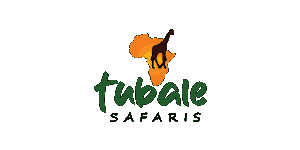





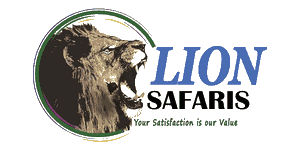

_4618_5ebbb703a4b33.gif)

